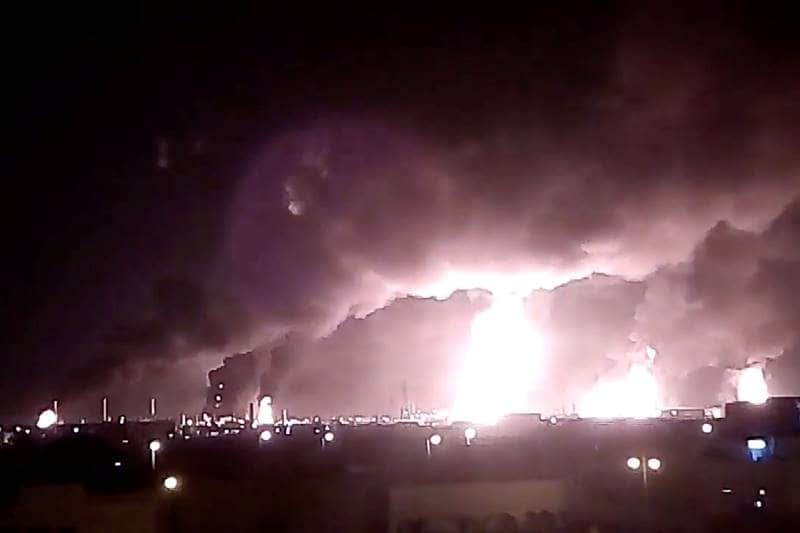-

The strike on the heartland of Saudi Arabia’s oil industry, including damage to the world’s biggest petroleum-processing facility, has driven oil prices to their highest level in nearly four months. With no spare capacity, future disruptions will fuel oil prices to rise more. A higher price over time will encourage producers to invest and pump more, while at the same time reducing consumption. Here are some facts about the impact on oil supply and spare capacity:
-
The attack cut 5.7 million barrels per day (bpd) of Saudi crude output, over 5 percent of the world’s supply. But the attack also constrained Saudi Arabia’s ability to use the more than 2 million bpd of spare oil production capacity it held for emergencies. (AP Photo)
-
Saudi Arabia, the United States and China all have hundreds of millions of barrels of oil in strategic storage. That is the storage that governments keep for exactly this scenario – to compensate for unexpected outages in supply. (Reuters Photo)
-
Iran holds spare capacity but it cannot get the oil to market because of sanctions imposed by the government of US President Donald Trump. (Reuters Photo)
-
The kingdom has for years been the only major oil producing country that has kept significant spare capacity that it could start up quickly to compensate for any deficiency in supply caused by war or natural disaster. (Reuters Photo)
-
If the Saudi outage looks like it will be prolonged and oil prices rally significantly, then shale producers will raise output. (Reuters Photo)
-
The United States has become the world’s top crude producer after years of rapid growth in supply from the shale sector, much of it pumped from fields in Texas. (AP Photo)
-
OPEC and its allies such as Russia have cut output to prevent prices from weakening because the market has been oversupplied. Those cuts aimed to reduce supply by 1.2 million bpd. But much of that was from Saudi Arabia so it now cannot be reversed quickly. Non-OPEC members such as Russia are pumping near capacity, with perhaps only 100,000-150,000 bpd of available additional production. (Reuters Photo)
-
Even before the Saudi attack, spare capacity was falling. Consultancy Energy Aspects has said it expects OPEC spare capacity to fall to below 1 million bpd in the fourth quarter from two million bpd in the second quarter of 2019. (AP Photo)